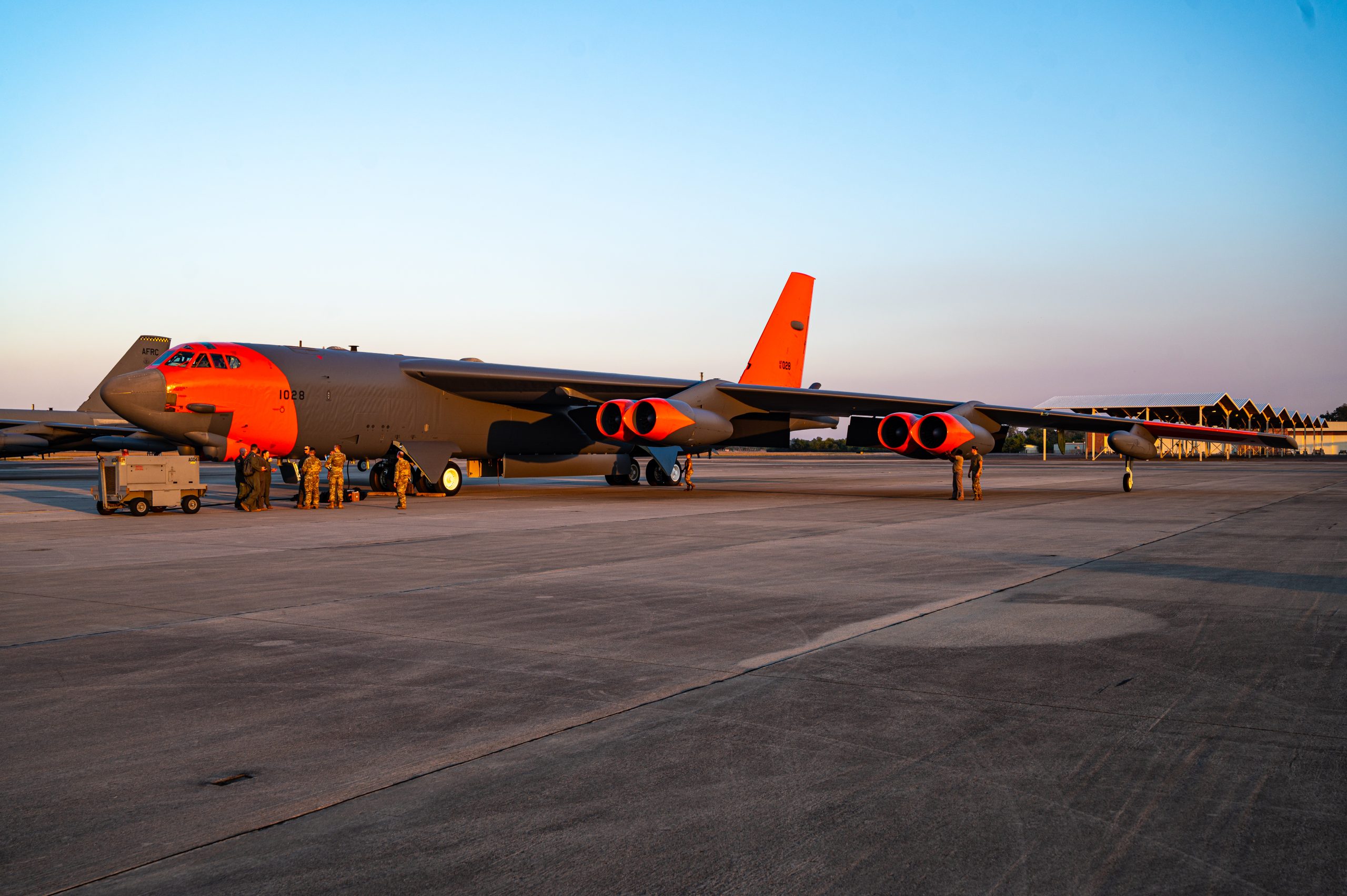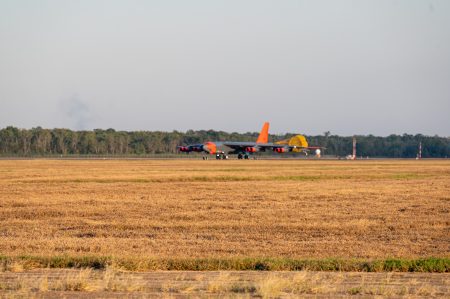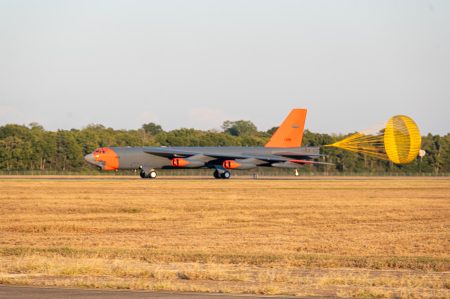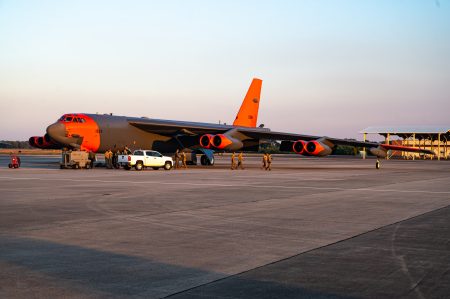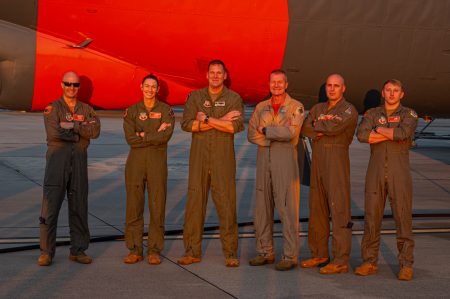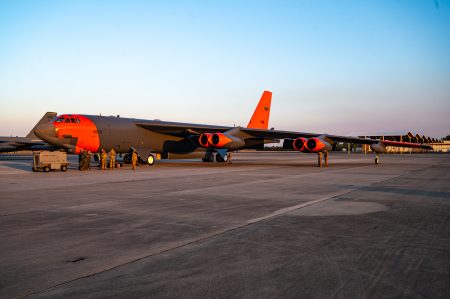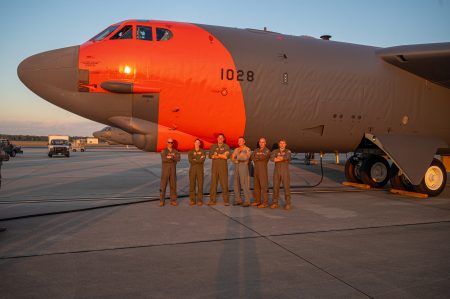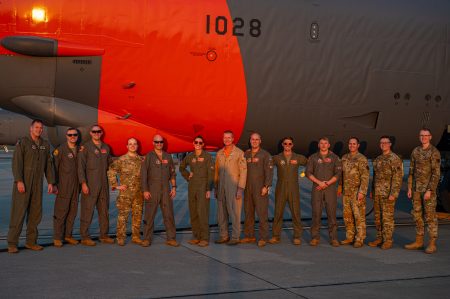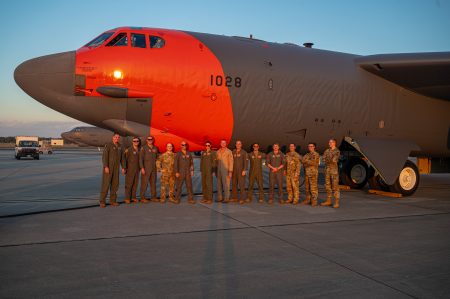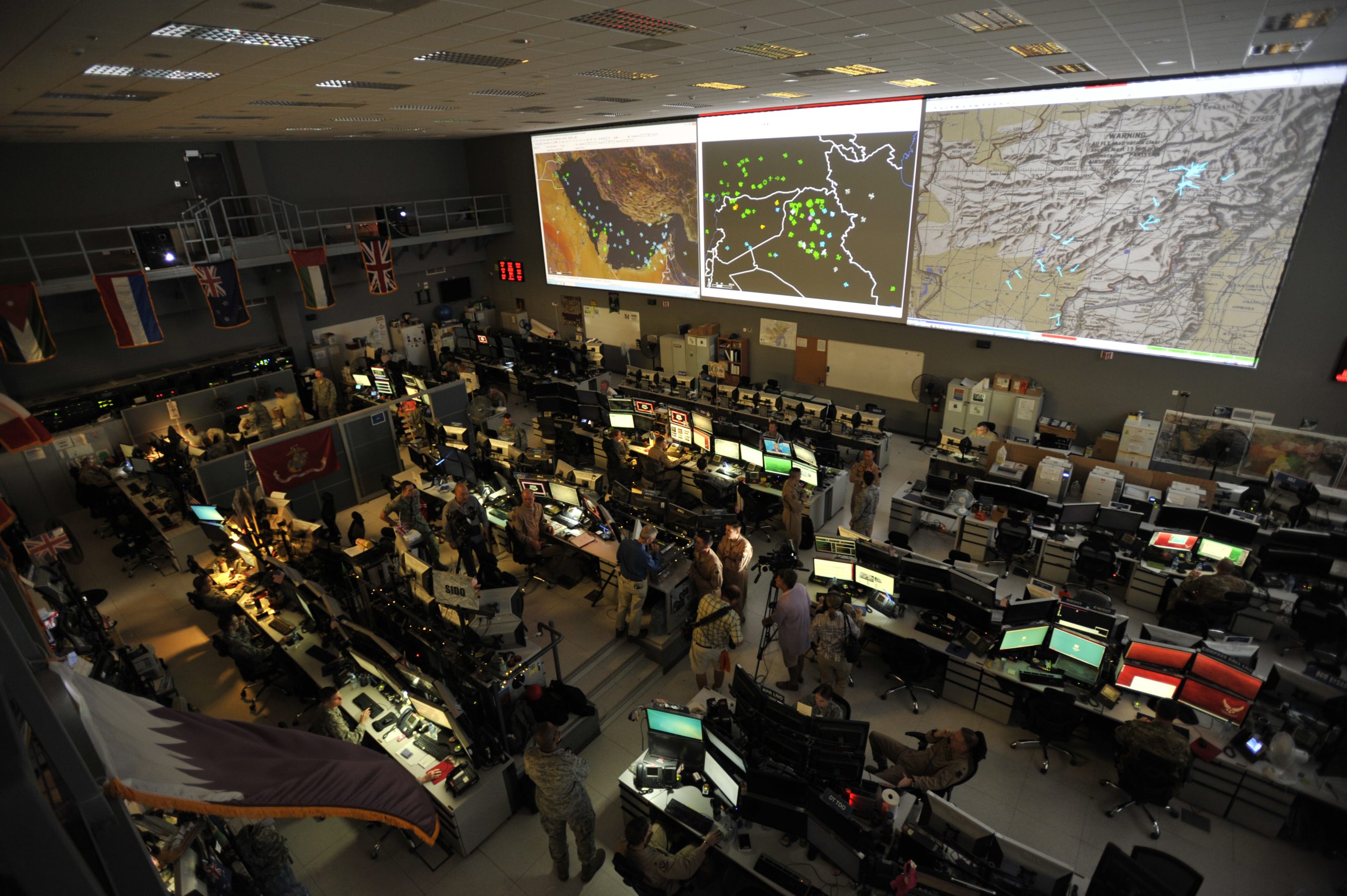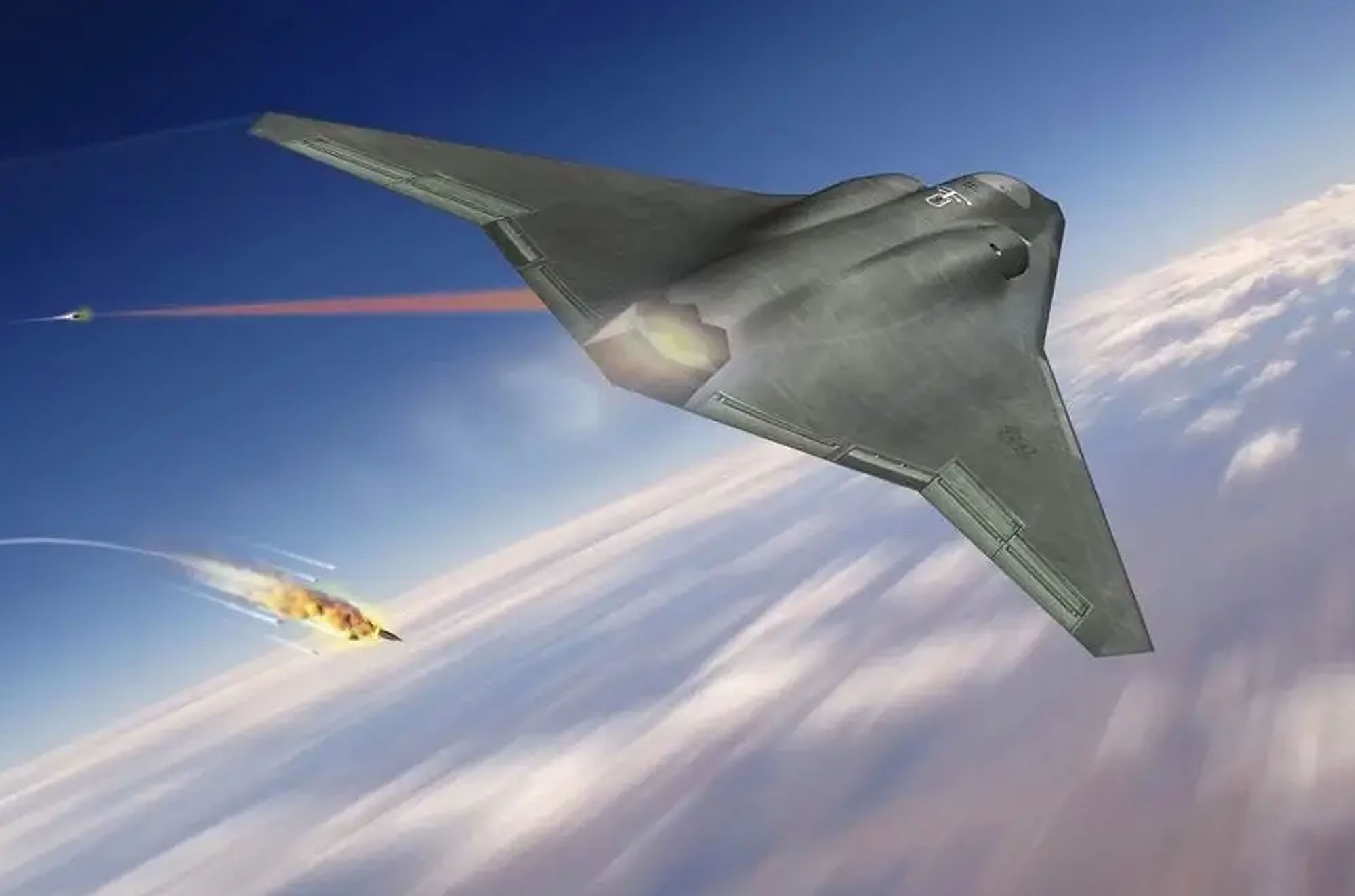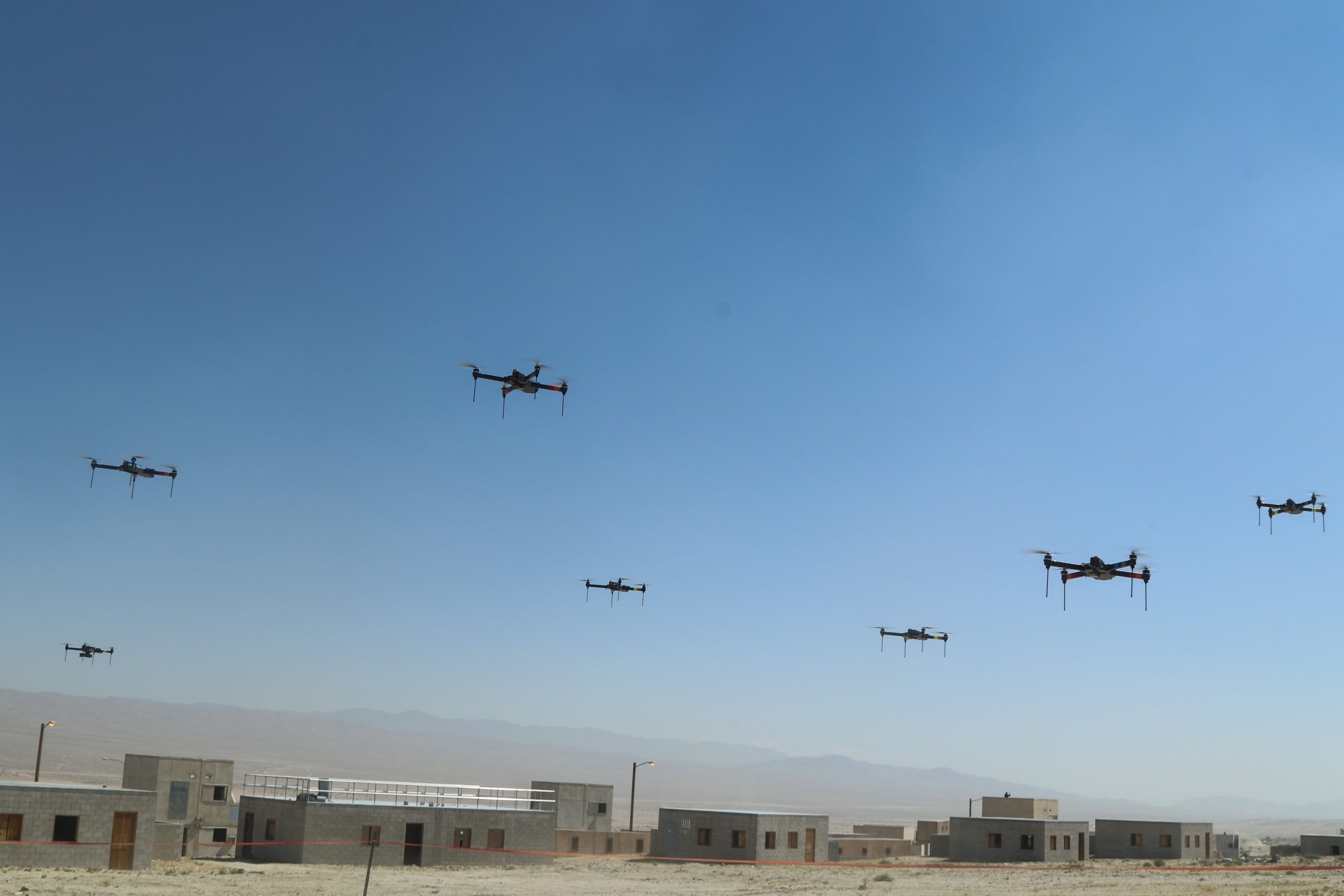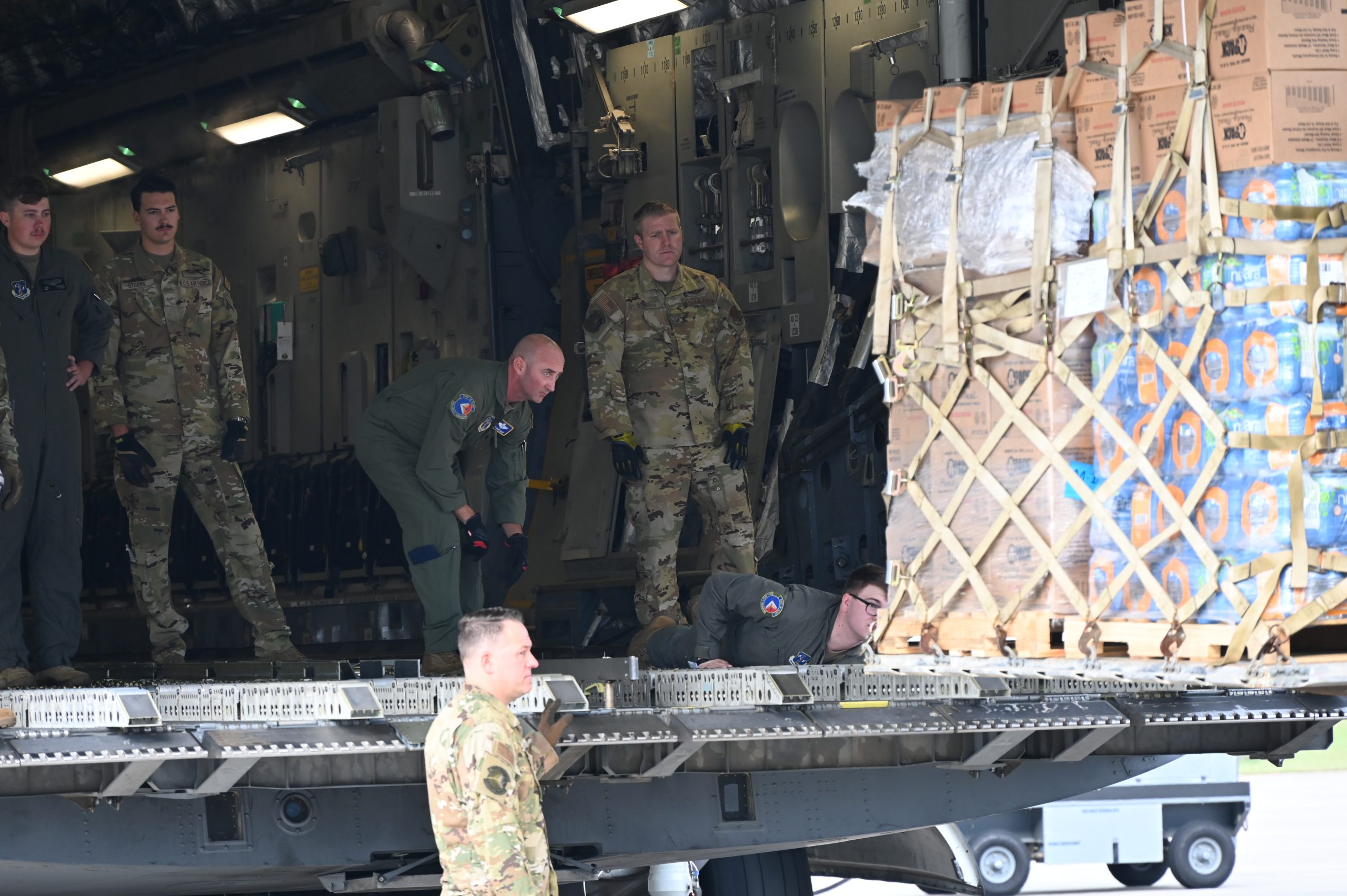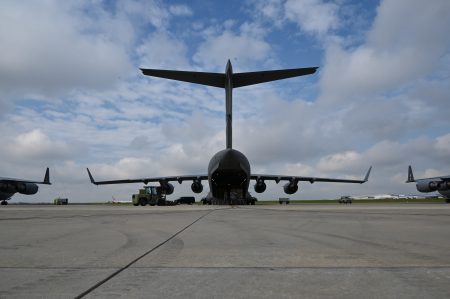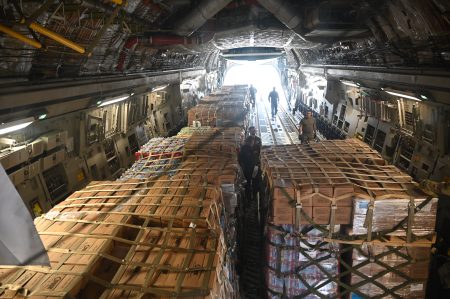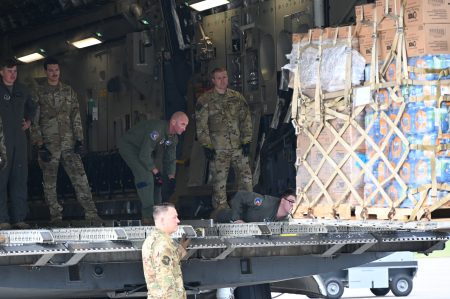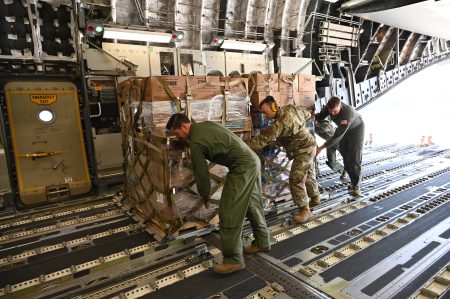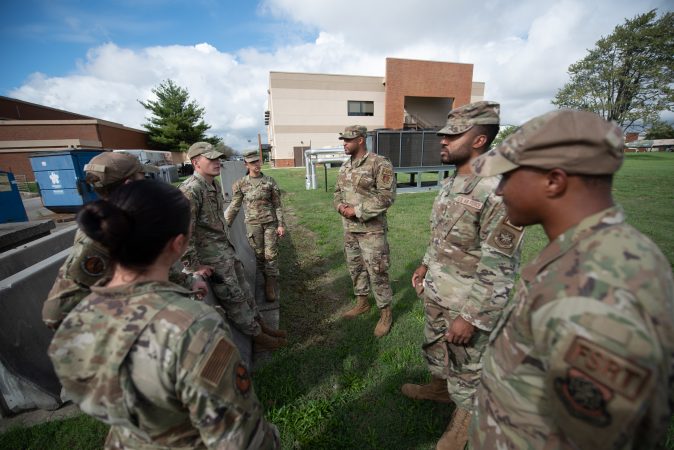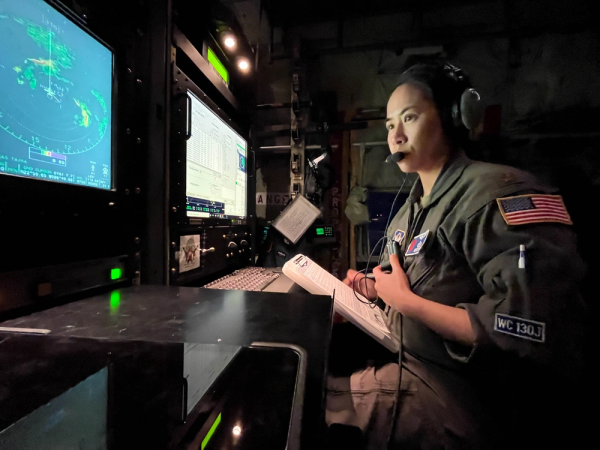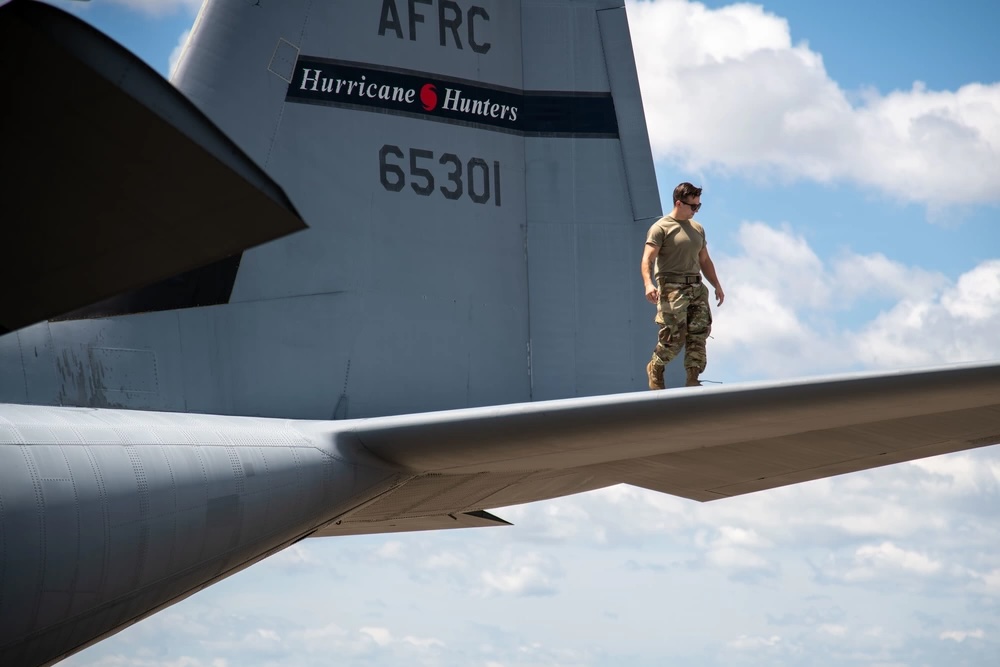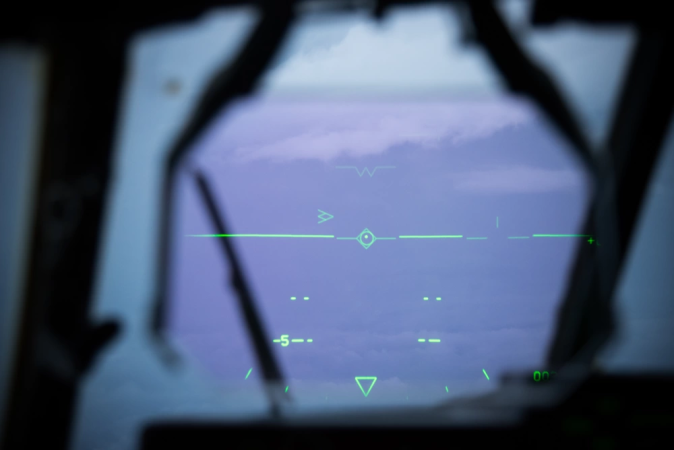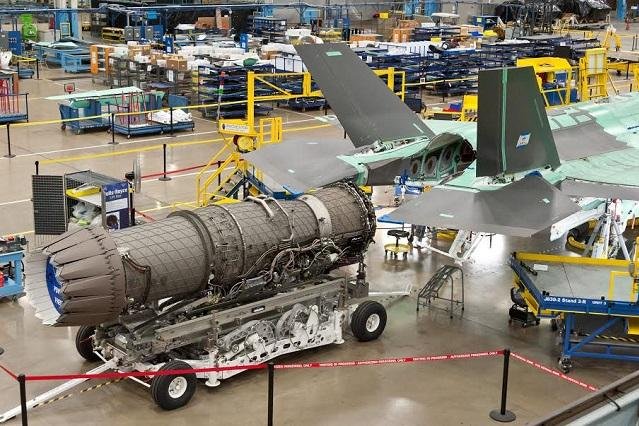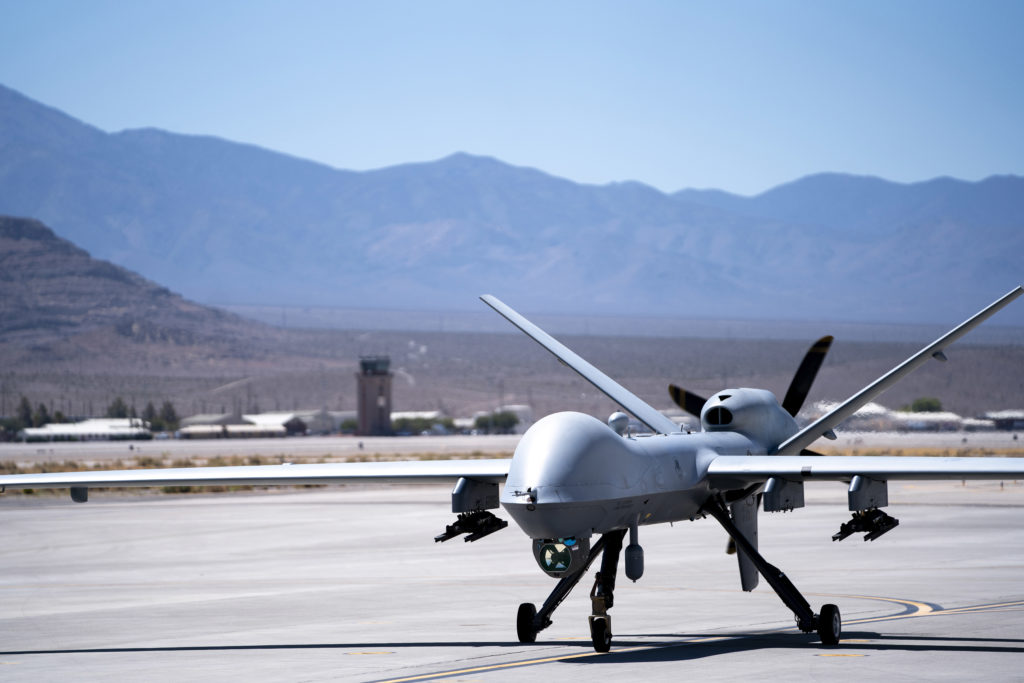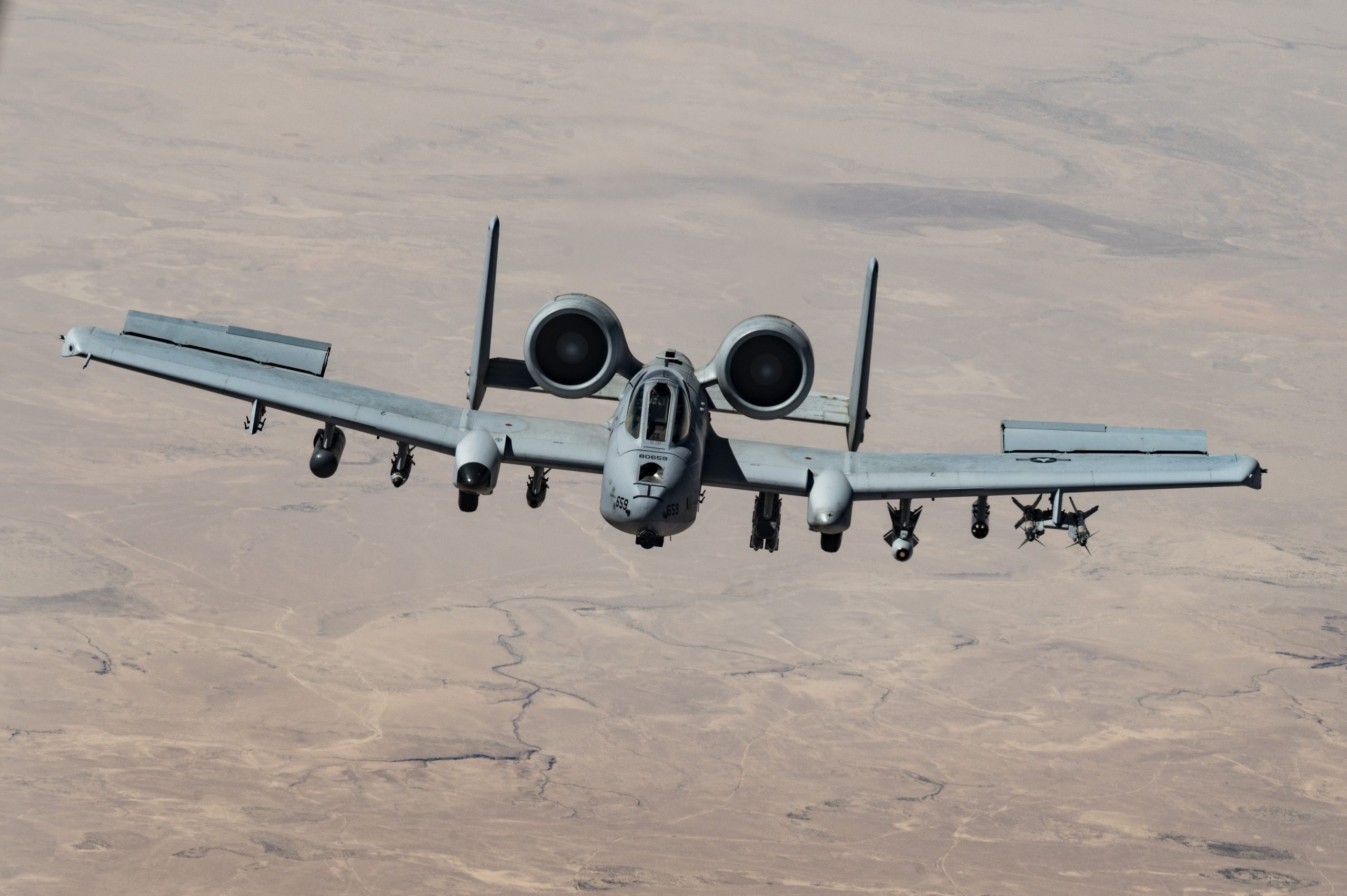B-52s touch down frequently at Barksdale Air Force Base, La., but the one that landed Sept. 30 looked a little different.
Sporting bright orange paint on the cockpit, wing tips, engine nacelles, and tail, the Stratofortress seemed dressed for an early start to hunting season in Louisiana; in fact, the special paint scheme was a nod to the B-52’s roots more than 60 years ago.
“The orange color represents the test and evaluations conducted during the 1950s and 1960s, honoring the B-52’s history,” the 2nd Bomb Wing noted in a photo caption of the B-52 landing.
Only three B-52A bombers were built, and two of them became test units for launching the X-15 rocket plane and other cutting-edge technologies: NB-52A 52-0003, nicknamed “The High and Mighty One,” and NB-52B 52-008, nicknamed “The Challenger.”
Collectively dubbed “motherships,” the two sported orange markings at times to better identify them as test vehicles. The Buff landing at Barksdale in September matched the pattern on “The High and Mighty One.” That airframe’s orange accents are still on display at the Pima Air & Space Museum in Arizona.

Fittingly, the orange-accented B-52 that landed at Barksdale is assigned to the 49th Test and Evaluation Squadron, the bombers’ operational testing lead.
A photographer identified as Redhome Aviation posted images to Facebook on Sept. 30, showing the bomber taking off from Tinker Air Force Base, Okla., where B-52s get depot-level maintenance.
The Air Force is upgrading its B-52Hs with new engines, radars, and cockpit equipment over the coming years. The changes will carry a new designator, B-52J, and keep the bombers in service into the 2050s, when the airframes will approach 100 years old.
